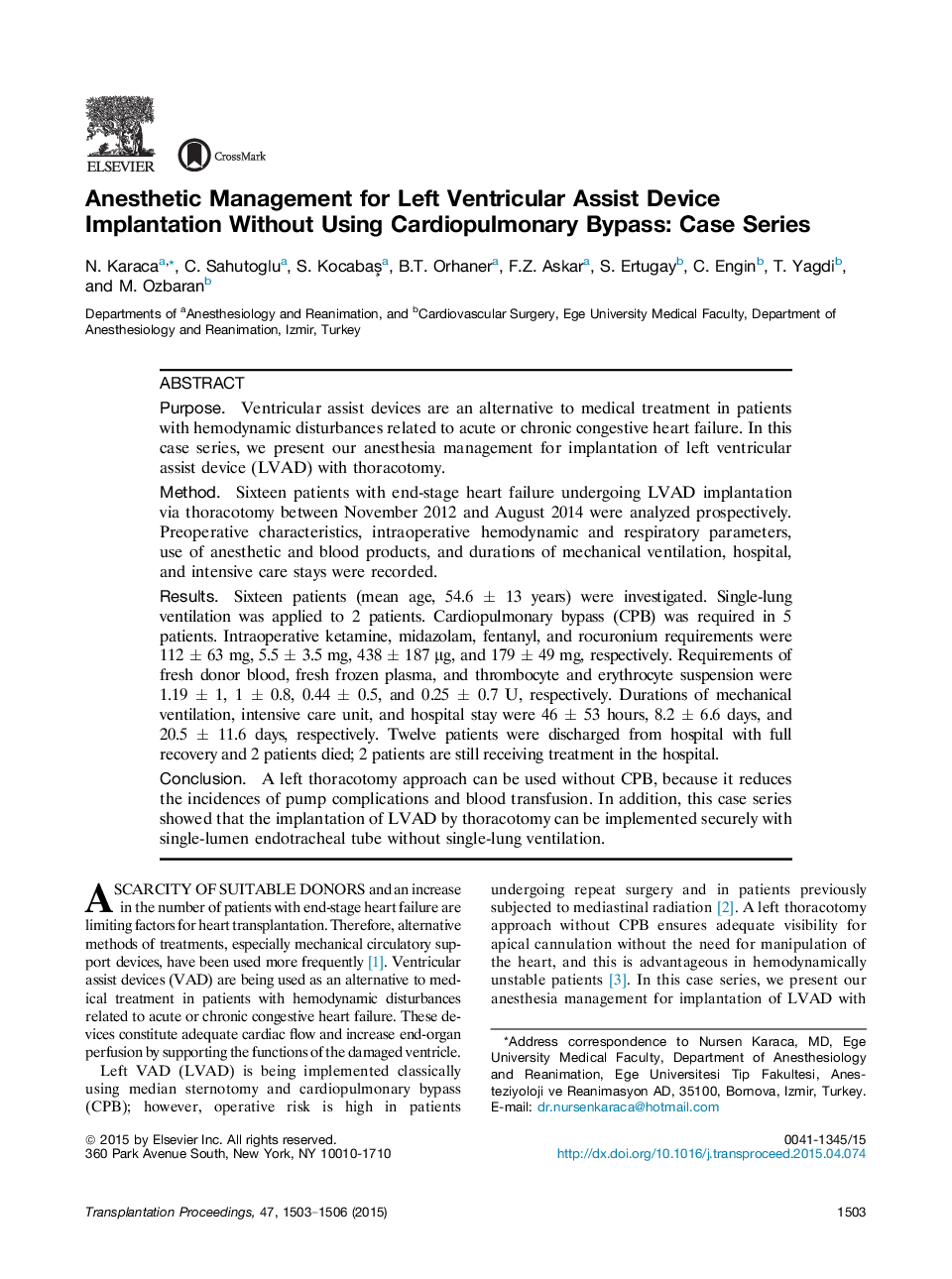| Article ID | Journal | Published Year | Pages | File Type |
|---|---|---|---|---|
| 4257414 | Transplantation Proceedings | 2015 | 4 Pages |
PurposeVentricular assist devices are an alternative to medical treatment in patients with hemodynamic disturbances related to acute or chronic congestive heart failure. In this case series, we present our anesthesia management for implantation of left ventricular assist device (LVAD) with thoracotomy.MethodSixteen patients with end-stage heart failure undergoing LVAD implantation via thoracotomy between November 2012 and August 2014 were analyzed prospectively. Preoperative characteristics, intraoperative hemodynamic and respiratory parameters, use of anesthetic and blood products, and durations of mechanical ventilation, hospital, and intensive care stays were recorded.ResultsSixteen patients (mean age, 54.6 ± 13 years) were investigated. Single-lung ventilation was applied to 2 patients. Cardiopulmonary bypass (CPB) was required in 5 patients. Intraoperative ketamine, midazolam, fentanyl, and rocuronium requirements were 112 ± 63 mg, 5.5 ± 3.5 mg, 438 ± 187 μg, and 179 ± 49 mg, respectively. Requirements of fresh donor blood, fresh frozen plasma, and thrombocyte and erythrocyte suspension were 1.19 ± 1, 1 ± 0.8, 0.44 ± 0.5, and 0.25 ± 0.7 U, respectively. Durations of mechanical ventilation, intensive care unit, and hospital stay were 46 ± 53 hours, 8.2 ± 6.6 days, and 20.5 ± 11.6 days, respectively. Twelve patients were discharged from hospital with full recovery and 2 patients died; 2 patients are still receiving treatment in the hospital.ConclusionA left thoracotomy approach can be used without CPB, because it reduces the incidences of pump complications and blood transfusion. In addition, this case series showed that the implantation of LVAD by thoracotomy can be implemented securely with single-lumen endotracheal tube without single-lung ventilation.
